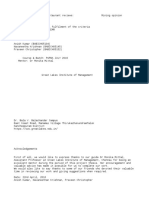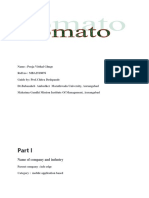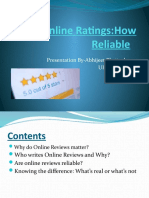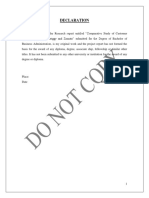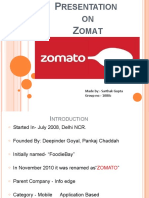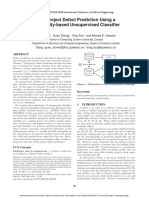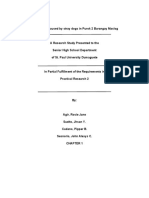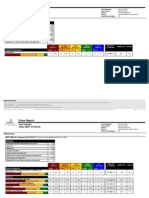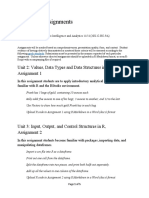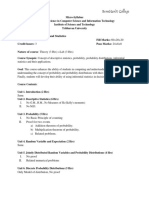0% found this document useful (0 votes)
84 views5 pagesWhat Exactly Is A Review Rating?
Ratings across review sites vary widely even when looking at similar businesses. This is because each site calculates ratings differently based on their own algorithms and goals. Zomato normalizes ratings on a bell curve by city, pulling most businesses to a 3-star average. Yelp's algorithms filter more positive reviews, lowering averages. Consumers also tend to only leave extreme 1- or 5-star reviews, rather than moderate ratings. To get a full picture, businesses should collect their own reviews in addition to viewing third-party site ratings.
Uploaded by
Sree HariharanCopyright
© © All Rights Reserved
We take content rights seriously. If you suspect this is your content, claim it here.
Available Formats
Download as DOCX, PDF, TXT or read online on Scribd
0% found this document useful (0 votes)
84 views5 pagesWhat Exactly Is A Review Rating?
Ratings across review sites vary widely even when looking at similar businesses. This is because each site calculates ratings differently based on their own algorithms and goals. Zomato normalizes ratings on a bell curve by city, pulling most businesses to a 3-star average. Yelp's algorithms filter more positive reviews, lowering averages. Consumers also tend to only leave extreme 1- or 5-star reviews, rather than moderate ratings. To get a full picture, businesses should collect their own reviews in addition to viewing third-party site ratings.
Uploaded by
Sree HariharanCopyright
© © All Rights Reserved
We take content rights seriously. If you suspect this is your content, claim it here.
Available Formats
Download as DOCX, PDF, TXT or read online on Scribd
/ 5
